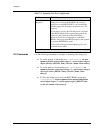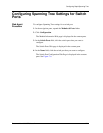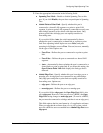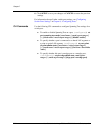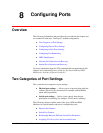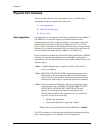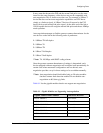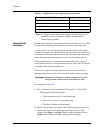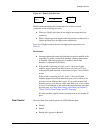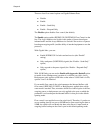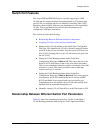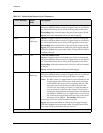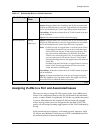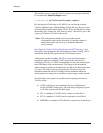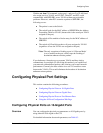
8-4 User Guide for the Avaya P580 and P882 Multiservice Switches, v6.1
Chapter 8
* Note: If a Gigabit module that does not support the autonegotiation is
connected to a device that does, disable autonegotiation to
ensure proper operation.
Remote Fault
Detection
Remote fault detection is a proprietary feature that prevents a loss of traffic
if a physical or signaling error occurs on a switch-to-switch fiber link.
A remote fault is an error that one switch can detect but the other switch
cannot. For example, if a transmit fiber breaks, the remote port continues to
receive data and so detects that the link is good. However, the remote port
cannot detect that the data it transmits is not received by the local port.
If remote fault detection is enabled and a remote fault occurs, the local
switch sends a message to inform the remote switch of the fault. The remote
switch then shuts down the remote port.
If the receive signal is restored on the local port, the local port sends a
message to the remote switch, which then turns on the remote port again.
*Important: Remote fault detection must be enabled on both the
local port and remote port for the feature to work.
For example, in Figure 8-1:
1. Port 1 on Switch A is not receiving traffic from Port 2 on Switch B.
This problem could occur because:
— The transmitter on port 2 is not functioning.
— The receiver on port 1 is not functioning.
— The fiber is broken or disconnected.
2. Switch A detects the error condition and sends a message to Switch B,
which shuts down Port 2. (When the port is shut down, its status
changes from Okay to No Link. The port status is displayed in the
Status field of the Physical Port Configuration Web page.)
M5502R-1000SX-F J or earlier
M5502R-1000LX-F J or earlier
M5502R-1000SLX-F H or earlier
Table 8-1. Gigabit Modules not Supporting Autonegotiation
Gigabit Module Model Number Hardware Revision
2 of 2



